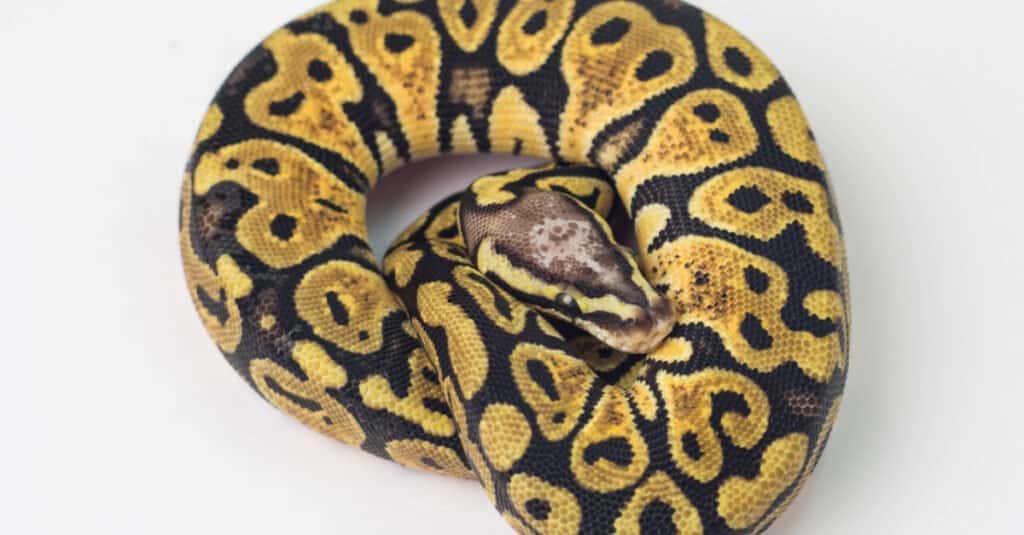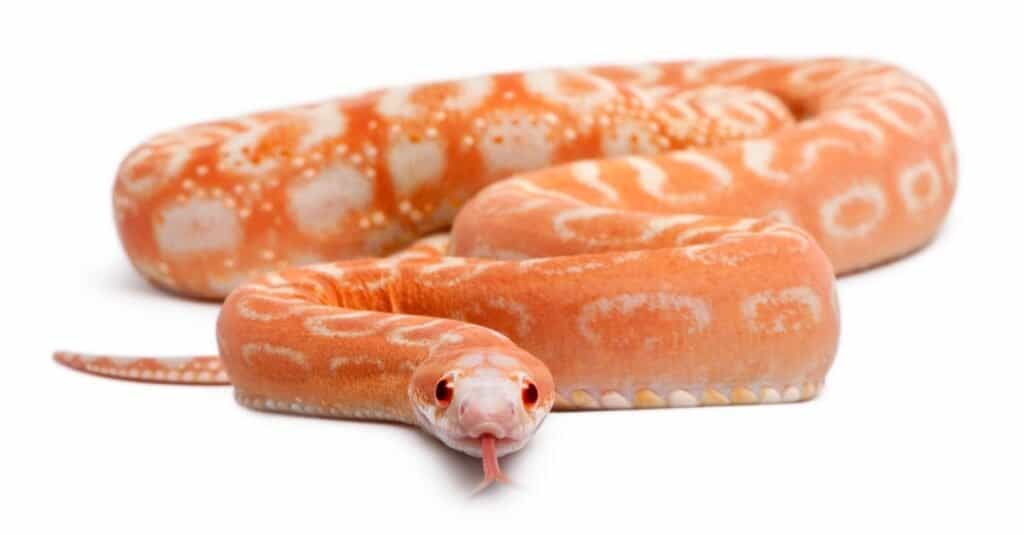Scales can be defined as rough, dry skin patterns, which come in a wide variety of different appearances, to help the snake survive in the wild. Scientists believe the scales evolved to protect the snake against potential dangers and threats; this is one of their main purposes, but they also enable the snake to move across the ground without too much friction, which helps to save energy. Scales also help to retain moisture inside of the body and, in some cases, even provide camouflage against a natural background. So, what about scaleless snakes?
Scaleless skin is a big disadvantage in the wild. They may have locomotion and moisture problems that make them less likely to survive. This is probably why you don’t see any scaleless species anywhere in the wild. However, a natural mutation does sometimes arise by random chance that causes the snake to develop mostly smooth, scaleless skin. This mutation is sometimes seized upon by snake breeders to create a specific scaleless line of snakes. Most of these snakes still have scales on their bellies, because otherwise, it would be very difficult to move around, but the rest of their skin is smooth.
This article will cover some important facts about the top five most common scaleless snakes in the world, some of which even make for good pets. Keep in mind that many of these snakes are quite expensive and rare to find. They’re difficult to breed and still relatively unknown among pet owners. Once you purchase one, the scaleless snake will need a soft substrate and plenty of humidity and moisture to deal with some skin problems, but otherwise, their care isn’t too different from the typical scaled snake.
#5: Scaleless Rattlesnake Snake
The rattlesnake is a group of highly venomous vipers that send an ominous warning to predators and threats with the rattle on the tail. These species are entirely native to the Americas; perhaps the most well-known species, the western diamondback, can be found in the southwestern United States and Mexico. They subdue their small prey with their highly toxic venom and eat it whole. While obviously not suitable as a pet, the scaleless rattlesnake does sometimes appear in the wild. When captured, they can show up in zoos or other displays.
#4: Scaleless Garter Snake
The garter snake is a genus of small, harmless species that live throughout North America. They can be found in a wide variety of different habitats, including grasslands, forests, wetlands, and even lawns. Garter snakes have a very long but thin appearance with green, brown, or yellow-colored skin. Their diet mainly consists of small animals like slugs, earthworms, rodents, and lizards. Like the rattlesnake, scaleless mutations do sometimes appear in the wild, but they’re not generally developed by breeders into unique lines.
#3: Scaleless Western Rat Snake
The western rat snake, and its popular subspecies, the Texas rat snake, is a non-venomous species from the western and southern United States. Measuring anywhere between four and six feet long, it is characterized by a yellow or tan body with irregular brown or olive-green splotches from head to tail. They subdue their prey (including rodents, birds, lizards, and frogs) by constricting them with their long body. Their calm temperament and easy care make them popular choices in the pet trade.
#2: Scaleless Ball Python

©viper345/Shutterstock.com
The ball python, although originating from West and Central Africa, is among the most popular pet snakes in the world. Measuring up to six feet long, this species is characterized by alternating light brown and black or dark brown splotches on the back and sides. The cream-colored belly also has an appearance of black markings. In the wild, the ball python consumes small mammals and birds by constricting them to death. It has a very healthy lifespan of 25 to 30 years.
#1: Scaleless Corn Snake

©iStock.com/GlobalP
Sporting alternate bands of orange and red, the corn snake is a large species, measuring up to six feet long. Very common throughout the southeastern United States, the snake earned its name either because it was found near grain stores or because its checkered pattern resembles corn. As a type of rat snake, it feeds on rodents, as well as other reptiles and amphibians, by constricting them with its body. The scaleless version of the corn snake is perhaps the most popular scaleless snake in the world. They have a lifespan of around six to eight years in captivity.
Summary
A genetic mutation causes some snakes in the wild to be born without scales. These snakes are at a serious disadvantage and do not generally survive long. Some snake breeders have taken advantage of this mutation when it occurs in captive snakes and have deliberately bred lines of scaleless snakes for the pet trade. The practice raises ethical concerns about deliberately creating inbred animals with a genetic disorder. Despite the ethical issues, these snakes remain popular as pets.
According to our research, the top five scaleless snakes are as follows:
| Snake Species | |
|---|---|
| 1. | Scaleless rattlesnake |
| 2. | Scaleless garter snake |
| 3. | Scaleless western rat snake |
| 4. | Scaleless ball python |
| 5. | Scaleless corn snake |
Up Next…
- 9 Snakes With Keeled Scales (And What It Means) We covered scaleless snakes, how about Keeled snakes? Find out what they are here.
- Saw-scaled viper Check out the cool scales on this viper!
- The 9 Most Colorful Beetles In The World Want to check out some other interesting creepy-crawlies? Check these out.
The photo featured at the top of this post is © photos2013/Shutterstock.com
Discover the "Monster" Snake 5X Bigger than an Anaconda
Every day A-Z Animals sends out some of the most incredible facts in the world from our free newsletter. Want to discover the 10 most beautiful snakes in the world, a "snake island" where you're never more than 3 feet from danger, or a "monster" snake 5X larger than an anaconda? Then sign up right now and you'll start receiving our daily newsletter absolutely free.
Thank you for reading! Have some feedback for us? Contact the AZ Animals editorial team.






